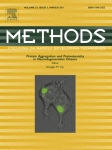From a purist perspective, the agricultural practices are creating higher deer population and density. The guy dumping a bail of alfalfa is creating seasonally greater density but not necessarily population. I think I just talked myself into banning farming.
But if frequency is a more important factor than density...with of course the problems to frequency that density can contribute...oh hell, my head is starting to hurt.





